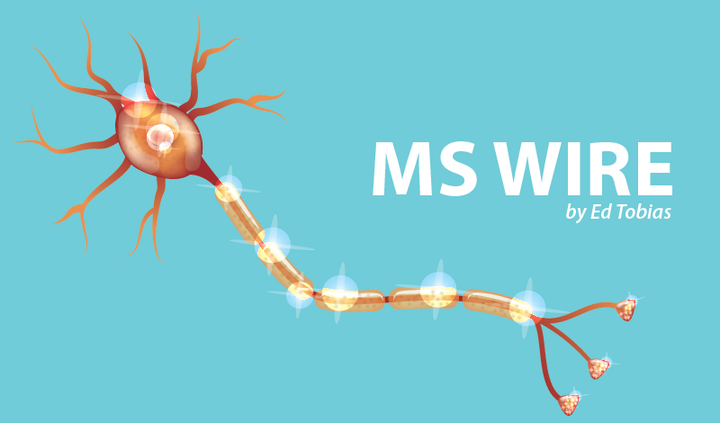Is This the Key that Unlocks Stem Cell Treatments for MS?


Americans who want to treat their MS with a stem cell transplant have a tough road to follow. They’re forced to travel to Russia, Mexico, or somewhere else out of the country and to spend a lot of money to avoid the U.S. Food and Drug Administration’s stem cell treatment barrier. But now, a crack may be appearing in that wall.
An article in STAT reports on surgeons at Houston’s Memorial Hermann Hospital who are trying to limit the damage of traumatic head injuries with a treatment involving stem cells. In a clinical trial, the procedure under study draws bone marrow cells, including stem cells, from an injured patient. Then, the cells are infused back into the patient. The goal is to restrict the patient’s immune response to the head injury, which can sometimes spiral out of control, flooding the brain with immune cells for longer than needed and continuing to harm the brain for months. The researchers hope that a cell transplant shortly after the injury will limit that over-response while still promoting anti-inflammatory healing.
The Houston trial has enrolled about 14 of the 55 patients it needs for its adult trial and about 38 of 50 patients for a pediatric trial. (You can’t volunteer for either trial. The head injuries must be so severe that the patients are unconscious. Family members provide consent.)
A new program called RMAT
The FDA has approved this clinical trial under a new designation called regenerative medicine advanced therapy (RMAT). According to STAT, the idea of RMAT “is to promote therapies in regenerative medicine that show the greatest potential.” Reporter Andrew Joseph believes this “signals that the [FDA] sees at least some promise in the experimental treatment and that opens up the possibility of a speedier approval.”
Since introducing its new RMAT designation in 2017, the FDA has pinned that tag onto about 15 therapies involving cells and tissues. “They want to speed up the [clinics] that they see as good citizens,” said Paul Knoepfler, a stem cell scientist at the University of California, Davis. On the other hand, the FDA appears to be cracking down on shady stem cell clinics, the ones that offer unproven, possibly dangerous treatments that can also be expensive. It’s sort of a good-cop, bad-cop process going after the bad clinics while trying to encourage research by clinics who play by the rules.
A dozen therapies received RMAT status in 2017, according to BioInformant, and at least three have been added so far this year. The medical problems they’re treating range from osteoarthritis of the knee to leukemia to thermal burns. Unfortunately, multiple sclerosis is not among the illnesses with an RMAT trial, at least not yet.
Let’s hope, however, that the RMAT program brings us a little closer to the day when stem cells can be used to treat our disease.
You’re invited to visit my personal blog at www.themswire.com. Also, check out our new MS forums section, the place for MS conversation.







Gwen
The treatment in Russia and Mexico that most people go for is HSCT. The "active "treatment" is actually chemotherapy and stem cells are just used to speed up the recovery time.
Sharath
Very true Gwen!
Theodore Heckert
There are alternatives for patients in the US
Look up "Brain & Body Health Center and Regenerative Medicine" located in Winchester Virginia. They also have a Face Book page. You need to check them out. I honestly believe that they are on the cutting edge of a cure. I only wish that I could convince my daughter to go there but there has been so much negative responses to stem cell that it is unreal and people don't have all of the facts.
Marylinn
Hi Gwen I did not realize that . I had it explained differently when we were in Russia after a family member underwent the treatment. It has been 4 years and doing well. Much better than at start and no progression. I wish the USA would open up. Another , much younger family member has just been diagnosed.
Cyndi
Awesome! This is exciting news! I’d love to know if there are any companies with proposals currently pending under the RMAT protocol for the treatment of MS. Anyone know? Have specifics?
Ed Tobias
Cyndi,
I would, too. I'm going to try to find time to look into this, but it's not something that can be researched quickly. If you learn of anything, please let us know.
Ed
Greg
"Americans who want to treat their MS with a stem cell transplant have a tough road to follow. They’re forced to travel to Russia, Mexico, or somewhere else ..."
What has been the success rate and benefit?
Ed Tobias
Sorry, Greg. I don't have any information about the success rate for these transplants.
Ed
SARA McCLOSKEY
I WOULD LOVE TO BE IN ANY STUDY TO REPAIR SLOW DOWN MY MS.I can't travel to Russia etc.Please to do great
work and make available please....
Todd Boldt
Iam looking for a study on stem cells as well ebriotic mediciable
Greg
I underwent HSCT at Northwestern in 2003, performed by Dr Richard Burt, a pioneer and leader in this protocol. Back then, it only cost me $60,000 out of pocket as insurance would not pay. I went 4.5 years with no progression or mri activity or exacerbations. Then in 2008 I relapsed and started on copaxone, then Rituxan, then Tysabri. Glad I did it, just wished it was curative as was hoped at that time. I believe about 60-70% of people go at least that long without disease evidence. It is not curative and won’t guarantee a lasting remission though.
Ed Tobias
Hi Greg,
Thanks for sharing this. It's the first time I've heard someone say that an HSCT wasn't the cure they'd hoped for. I wish you well on Tysabri, which worked well for me for several years before my tider score reached a level that required me to change DMTs. I'm now hoping, after just completing my second round of Lemtrada, that I'm now done with DMTs.
Ed
Wendy Stephens
Fellow Nders, Tisch MS Research Center in New York just began Phase II studies on stem cells after successful results in their Phase I study. Very promising!
Marilyn
I am trying so hard to be one of the 50 people they choose at Tisch MS car. ???
Kevin Keplinger
Hi Ed,
I saw where you said that you wanted some current stats. Well the best I have are that we currently have about 4,000 autoimmune patients treated with about 2,500 being MS patients. It is 80% - 85% effective with 15% - 20% being nonresponders. I believe that includes those like Greg that relapse at a later date. We don't know why some patients are nonresponders, however Dr. Roland Martin did address this at the recent EBMT meeting about a month ago. He said that the largest group of nonresponders are those that either received rATG during HSCT, like Dr. Burt uses in his chemo cocktail, or those that had previously been treated with Alemtuzumab. You can see the discussion with Dr. Martin on YouTube.
Ed Tobias
Hi Kevin,
Thanks very much for all of this. May I ask to whom you're referring when you write "we currently have...?"
Thanks,
Ed
Sammi Nielsen
I'm loving reading all of this and am hoping now that I''m responding I will be seeing more of this information. I didn't see any place to sign up.
Ed Tobias
Hi Sammi,
I hope the information is useful to you. If you're referring to the trial in Houston, when you ask about signing up, I think you probably don't want to be in that trial. As I wrote in my column, that trial is only for patients who have suffered a severe brain injury. As far as I know, there are no current trial involving MS patients.
Ed
Ed Tobias
Sammi,
There's usually a pop-up window when you enter the website asking if you want to receive email notification of new content. Please look for it. You can also join our MS Forums: www.multiplesclerosisnewstoday.com/forums.
Ed
Ilene m. Bodily
Let me know if it is approved by the FDA
Rmat
Todd Boldt
I want to be in a study for stem cells ! My research reveals the mediciable kind from cord blood is the best results .
brad schlaeger
“aHSCT should be considered as first line therapy in patients with ‘aggressive’ MS,” the team concluded.
This is from latest articles. I am wandering what the definition of "aggressive: MS is? I am 10 years into diagnosis and SPMS stage.
brad schlaeger
“aHSCT should be considered as first line therapy in patients with ‘aggressive’ MS,” the team concluded.
I am 10 years into diagnosis and entering SPMS stage - Is that aggresive MS?
John
It’s very encouraging to hear that researchers are continuing to look for answers other than the drugs that you play musical chairs with.
Try one- than another-than another!
MJS
The cause of MS is the introduction of some bacteria strain to the gut flora by some means. Sometimes, a tick bite does this. The species when it reaches a critical number, will have a footprint in the gut(usually within 5 years). From there it can start teaching the immune system to attack the nervous system. Doing the stem cell procedure by itself will give you a break for 5 years or so as the bacteria gut has to reteach the immune system all over again. an FMT is needed to replace the gut bacteria, this followed by a stem therapy will wipe clear the immune system memory. Then you are clear of the disease. IF you do an FMT by itself, then you will have to wait 10 years for the immune system to completely forget what a certain strain taught him at one point. You will notice that the flare ups are diminishing in intensity as time goes by… What’s interesting is that in the US, both procedure are illegal/banned and your neuro will relentlessly push drugs like Avenox…